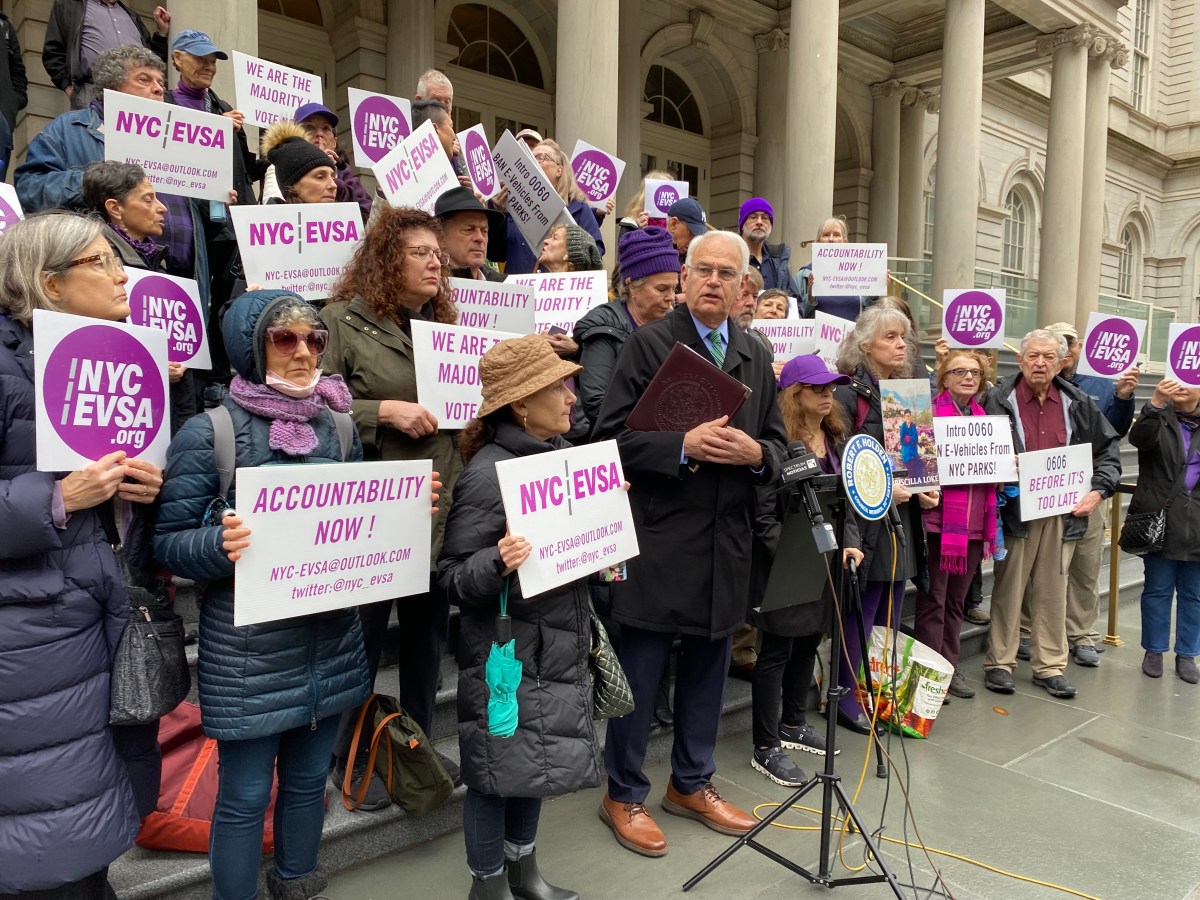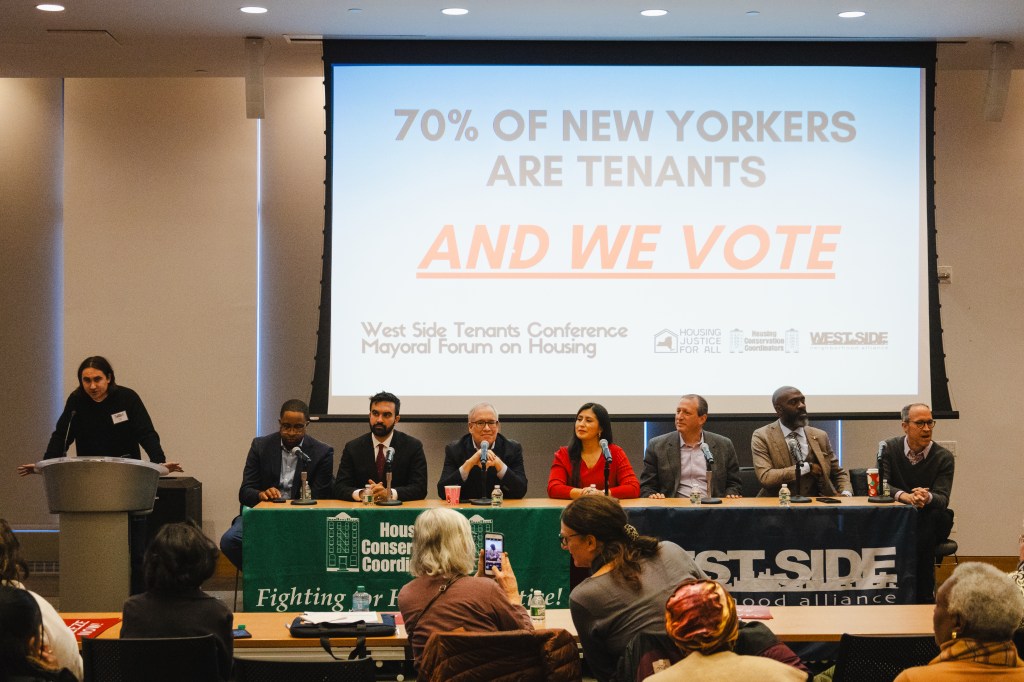Walls of water from a record January 3 rainfall have engulfed low-lying homes and streets in a 30-block area of southeastern Queens, causing millions of dollars in property damage.
Department of Environmental Protection officials said that a combination of high tide, high water tables, and a heavy rainfall caused the contents of the overloaded storm sewage system in Rosedale and Springfield Gardens to rise into the street.
The rains — 2.42 inches in two hours — caused intermittent flooding in sections of Rosedale, Springfield Gardens, St. Albans, Cambria Heights, and Queens Village — an area almost as large as Manhattan, with a quarter-million residents.
The downpour seriously impacted the residents day-to-day lives:
• Heavy floods prompted police and highway officials to close a stretch of the busy Springfield Blvd. in Laurelton.
• The rains triggered a three-hour noon time shut down of the E and F train service between the Parsons Blvd.-Archer Ave. and the Continental Ave.-71st St. stations, according to the Transit Authority.
• Springfield Gardens H.S. was shut down when its basement was engulfed by a 15-foot flood that sent an auto, from the school’s auto repair shop, crashing through a cellar wall.
• During the early morning hours, when the rain began, cold weather and icy roads caused a series of multi-car collisions on the Grand Central Pkwy., just off Utopia Pkwy., that sent 23 persons to four Queens hospitals, and closed down the roadway.
Borough President Claire Shulman, Congressman Gregory Meeks, Assemblyman William Scarborough, Councilwoman Juanita Watkins have issued a call to Gov. George Pataki to declare southeastern Queens a disaster area, so that local residents may be eligible for federal FEMA (Federal Emergency Management Act) and Intermodal Transportation Efficiency Act funding. FEMA funding had been used by residents after the two floods of 1996, and has been used to help Central Americans hit by the recent Hurricane Mitch disaster.
Watkins called the flood a disaster for her constituents. Water rose in some peoples’ homes as much as nine feet, she said. "This is the third time in three years that we have had such terrible flooding," she declared, "and in many cases the same people are affected."
Two years ago, in an exclusive interview, Scarborough prophetically told The Queens Courier, "I know from experience that even the slightest rain turns our homes and streets into an absolute horror." Before his election to the New York State Assembly, Scarborough had battled for sewers as District Manager of Community Board 12.
The latest flood comes during the third phase of a four-phased, $90 million sewer installation program by the City Dept. of Design and Construction. When completed in January 2000, the complex sewer system will link the giant four-barrel (eight feet high by 17 feet wide) storm drains that empty into Thurston Basin near Kennedy Airport, with the system’s Springfield Blvd. sewers at 143 St. Ultimately, the trunk line will run up to Springfield Blvd. and Carson St.
Although this main trunk line runs primarily northbound through Rosedale and Springfield Gardens, the adjacent communities of Cambria Heights, Laurelton, and Queens Village will also benefit when the City simultaneously links a series of east/west lateral storm sewers to the main line.
Following the October 1996 floods, Mayor Rudy Giuliani announced that the scheduled completion date of the storm sewer project would be accelerated by nearly three years (from September 2002 to January 2003).
Douglas Greely, Deputy Commissioner of the DEP’s Bureau of Water and Sewers, also confirmed that the massive project would be completed early in 2000.
Older residents grimly recall that local flooding conditions have embroiled residents of southeastern Queens with their City and state governments for more than three decades. Even after plans for a sewer line had been approved in the 1970’s, construction was postponed because of fiscal constraints.
In the 1980s things got worse: the State Dept. of Environmental Conservation objected to the project because of its concern for the surrounding wetlands. Work finally began in 1992.
State Senator Alton Walden, who lives in the flooded area, said, "The only City agency that is responsive is the Fire Dept., and all they do is pump out the basement."
Problems suffered by local residents are remarkably the same: Veronica Ricke, whose flooded home at 141 Rd., Springfield Gardens, had been pumped out by the Fire Dept., reported that much of her furniture was damaged and that she was sending her child to her mother because her home’s heating system was still defective. Ms. Ricks had similar problems during the last flood in 1996, and had received Federal aid then.
Clifton Stanley Diaz, chairman of the Environmental Committee of the Queens Civic Congress, said the worry in the neighborhood is for the future. He commended the Mayor’s office on his speedy and thorough action on the flooding and was worried what winter thaws and the rainy season will mean as sewer construction continues.































